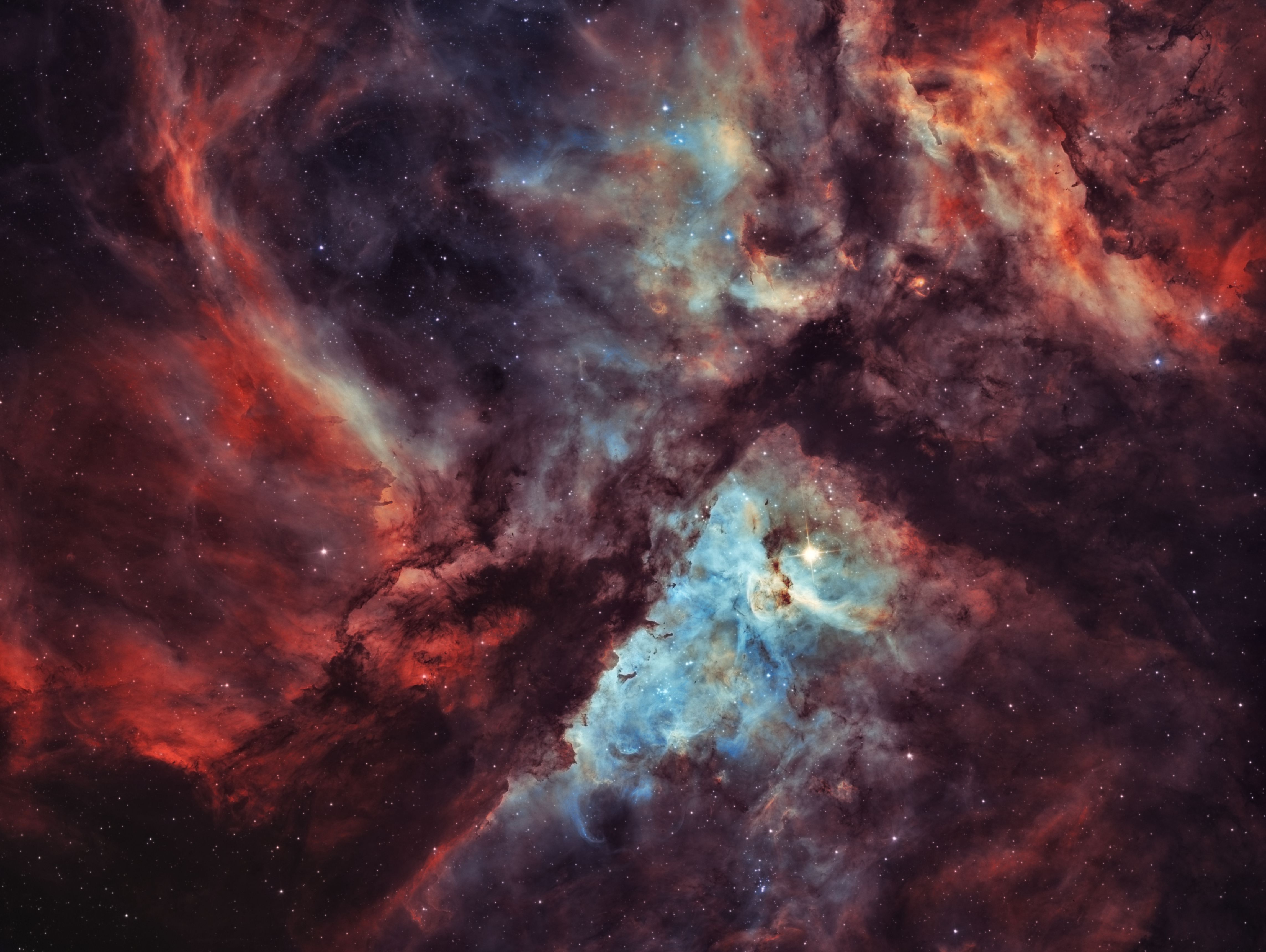Carina Nebula

Its been just over a year since I last imaged this nebula, this time however I get to do it in narrowband with a much better camera!
Very happy with the quality of my data recently. This image also incorporates a new star removal technique I've developed.
Date Created: 2020-01-17
Date Posted: 2020-01-18
Acquisition Details:
Scope: GSO 8" F/4, flocked, 2" moonlite, DIY AutoFocuser, DIY Secondary Dew Heater Coma Corrector: SkyWatcher Aplanatic/Quattro Camera: ZWO ASI 1600MMC PRO (Image scale ~1"/pixel) Mount: EQ6-R Guide Scope: ZWO 60mm Guide Cam: QHY5LIIC All ZWO LRGBSHO filters Taken on 13th and 17th January 2020. Subs & Integration times: Ha: 55 x300s (4.6 hrs) Oiii: 9x300s (45 mins) Grand Total: 5.35 hoursProcessing Details:
Ha: ABE, DECON, HT Stretch Oiii: ABE, HT Stretch Then using pixel math combination to create the RGB color space image. Several Curves, colour saturations (in PI) and Selective color in PS to get the colours you see. Then this RGB color space image was made starless with starnet. Then 2 rounds of LHE were applied to Ha image using a range mask that first targeted the bright regions and then the dark Star reduction was then performed by using mophological erosion and a starnet starmask that was binarized and then covoluted. Then I applied a new technique I have created that aims to remove small faint stars from the image. Because after star reduction an image may have lots of little reduced stars that make the background quite noisy. The technique is as follows: Create star mask with starnet. Binarize the starmask to remove the unwanted small stars. Dilate the remaining stars back to roughly original size if not a little bigger. Convolute this mask. Now using a starless copy of the original image, apply this starmask to it. Then add the original image with stars back in with pixel math. Only those stars that conform to the starmask will be put back in. Any small stars lost in the binarize will fail to be added. LRGB combination was then done with this edited Ha and the starless RGB color space image. Further contrast curves and saturation was applied. ACDNR on L with a inverted stretched luminance mask was then applied.Date Created: 2020-01-17
Date Posted: 2020-01-18
